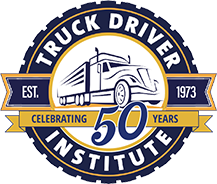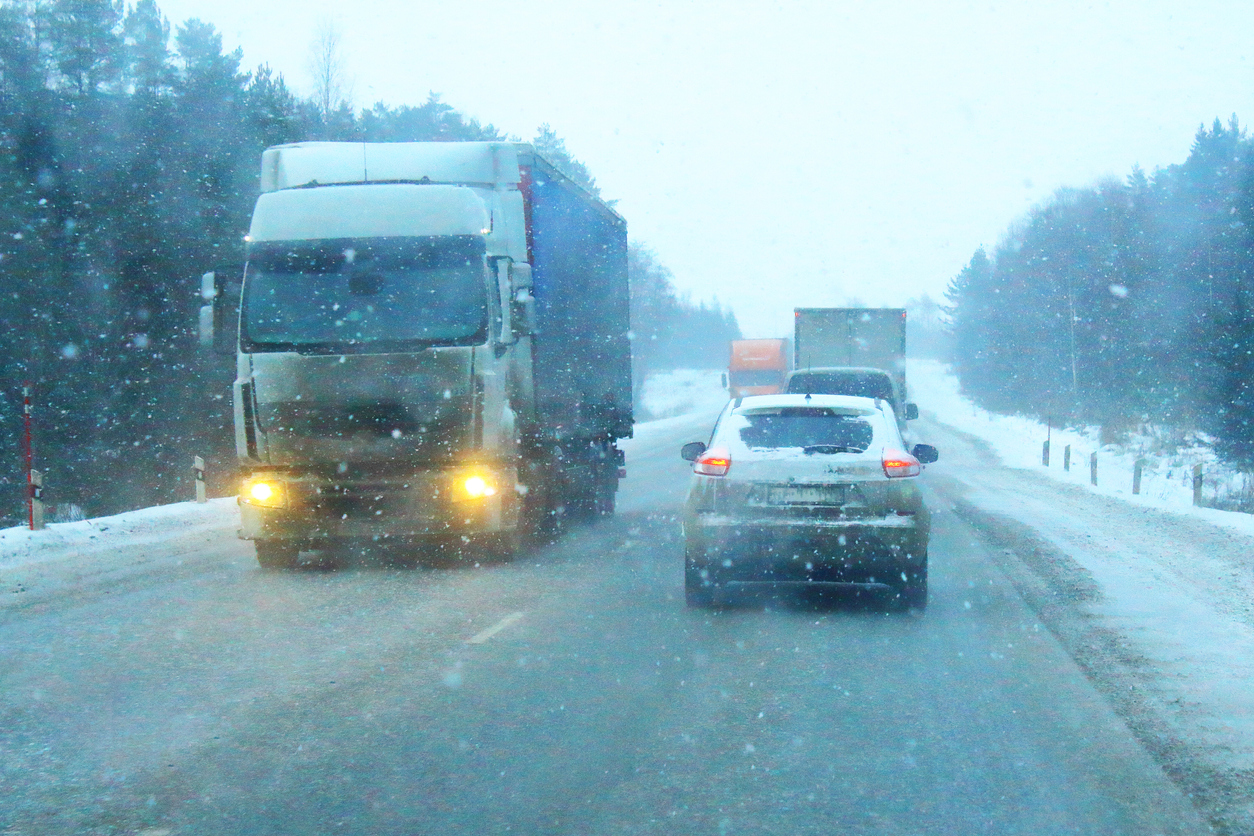Trucking in Bad Weather: What to Do if There’s a Storm
Whether you’re dealing with a thunderstorm, a tornado, or a hurricane, trucking in bad weather can be a real challenge. To keep yourself, your cargo, and other motorists safe, you need to know what to do if there’s a storm. From conducting thorough pre-checks to pulling off the road, read on to learn more about trucking in bad weather and how the industry deals with natural disasters and disruptions.
Trucking in Bad Weather Best Practices
When you’re hauling cargo and get stuck in a storm, the inclement weather can make roadway conditions dangerous. And without the proper safety precautions, accidents are likely to happen. Trucking in bad weather is challenging, but with these tips, you can keep yourself and others safe.
Drive with Weather Conditions in Mind
When trucking in bad weather, the most important thing you can do is drive with weather conditions in mind. In almost all bad weather conditions, you should reduce your speed, giving yourself more time to react to poor road conditions. You should also slow down to create more space between your car and the car in front of you, reducing the chances of a collision.
Pull Off the Road
If inclement weather conditions make it difficult for you to see out of your windshield or keep a handle on your vehicle, it’s time to pull off the road. Put on your blinker, move to the shoulder, and wait for the storm to subside before venturing out again.
Conduct Pre-Trucking Inspections
While truckers are responsible for checking their trucks before any trip, these inspections are especially important for trucking in bad weather. Pay extra attention to your tires, headlights, windshield wiper blades, and wiper fluid – all of these components will be vital in bad weather, and you don’t want to be blindsided by a storm.
Create a “Trucking in Bad Weather” Safety Kit
Before going on any long journey, assemble an inclement weather safety kit so that you can contend with the forces of nature. This safety kit can include things like tire chains, jumper cables, flashlights, gloves, rain flies and umbrellas, and a blanket to keep warm if you need to pull off the road for a while.
Trucking in Bad Weather: Different Weather Events and How to Deal with Them
As a truck driver hauling cargo all across the country, you will often find yourself dealing with a wide variety of weather events. From freezing rain to strong wind, every part of the country is prone to its own unique and damaging weather. This means that in a single journey from Louisiana to Nevada, you may experience any range of weather events, from hurricanes to dust storms. And in order to prepare yourself for trucking in bad weather, you must learn how to navigate each of these inclement weather events.
Freezing Rain
Freezing rain is one of the most hazardous weather conditions, especially for truckers, making it difficult to keep control of your vehicle. Freezing rain can make the road slick and your windshield frosty, so if you see ice beginning to form on the glass, pull off the road right away. Wait till conditions improve to get back on the road.
Blizzards or Heavy Snow
Like freezing rain, heavy snow is one of the most challenging trucking in bad weather scenarios. If you get caught in a snowstorm, tire chains are your best friend. Be sure to include tire chains in your safety kit alongside food and warm blankets. Because if the going gets rough, you’ll need to pull off the road and wait out the storm. And when the weather is cold, you’ll need warmth and fuel.
Strong Wind
Strong winds can sometimes be powerful enough to blow a truck off the highway, so if you get caught in a brutal crosswind, find a safe place to pull off the road. Try heading for a truck stop where you can nestle between two trailers, keeping the wind off your back for a while.
Dust Storms
Dust storms are difficult to predict, but they can be even more damaging than strong winds. Combining the sheer force of the wind with corrosive debris, dust storms are extremely dangerous. If you see one coming or hear a radio warning, get to a safe place and wait out the storm. While you’re waiting, be sure to keep all windows tightly shut to prevent dust from infiltrating the cabin.
Hail Storms
The main problem with trucking in hail storms is the lack of visibility. Hail can make it hard to see where you’re going, increasing your chances of getting in an accident. Hail can also cause major damage to the metal body of the truck. If you can, find a sheltered area to rest in until the hail passes. If you can’t stop, go easy on the brakes, because hail makes roads extra slippery.
High Heat Advisory
High heat can be a big problem for truckers. Not only are high temperatures tough on the rig and its systems, but the high heat can also cause your tires to melt! Melty rubber and an overheated engine make for a rough ride, so try to plan ahead and park during the hottest part of the day so you can drive during the cooler evening hours.
Freezing Cold
Freezing cold can be just as dangerous as heat. To keep your engine from freezing over during cold weather conditions, keep it idling, especially if you’re stopping for the night. By letting your motor run continuously, you keep it warm enough that ice won’t develop on the engine.
Tornados
Check the weather ahead of time, especially if meteorologists predict tornadoes or hurricanes. But if you get caught out on the open road in an approaching tornado, take cover underneath an overpass. This will offer you and your truck a little more protection than the open road.
Thick Fog
Like hail, thick fog impairs your visibility. If the fog is patchy enough that you can still see, it’s probably safe to keep driving. But once your visibility starts to decline, it’s time to pull off the road. Turn your flashers on so other cars know you’re there and wait out the fog.
Prepare for Trucking in Bad Weather with the Help of Truck Driver Institute
Trucking in bad weather is a challenge, but with the right tools and knowledge, you can keep yourself and your vehicle safe in any condition. But to stay safe during inclement weather, you have to know how to handle your truck. For the best trucking instruction around, look to Truck Driver Institute! We’re the largest Class A CDL school in the nation with 11 campuses across the nation. Get started with TDI today and begin your truck driving career.
Get Started
Get your Class A CDL in our friendly, supportive CDL training program. TRAIN with experienced instructors – multiple good-paying, secure job choices with benefits available for eligible graduates. EARN $700 – $1000+ / week to start as a truck driver. Get started today by filling out the form below. We look forward to hearing from you!




